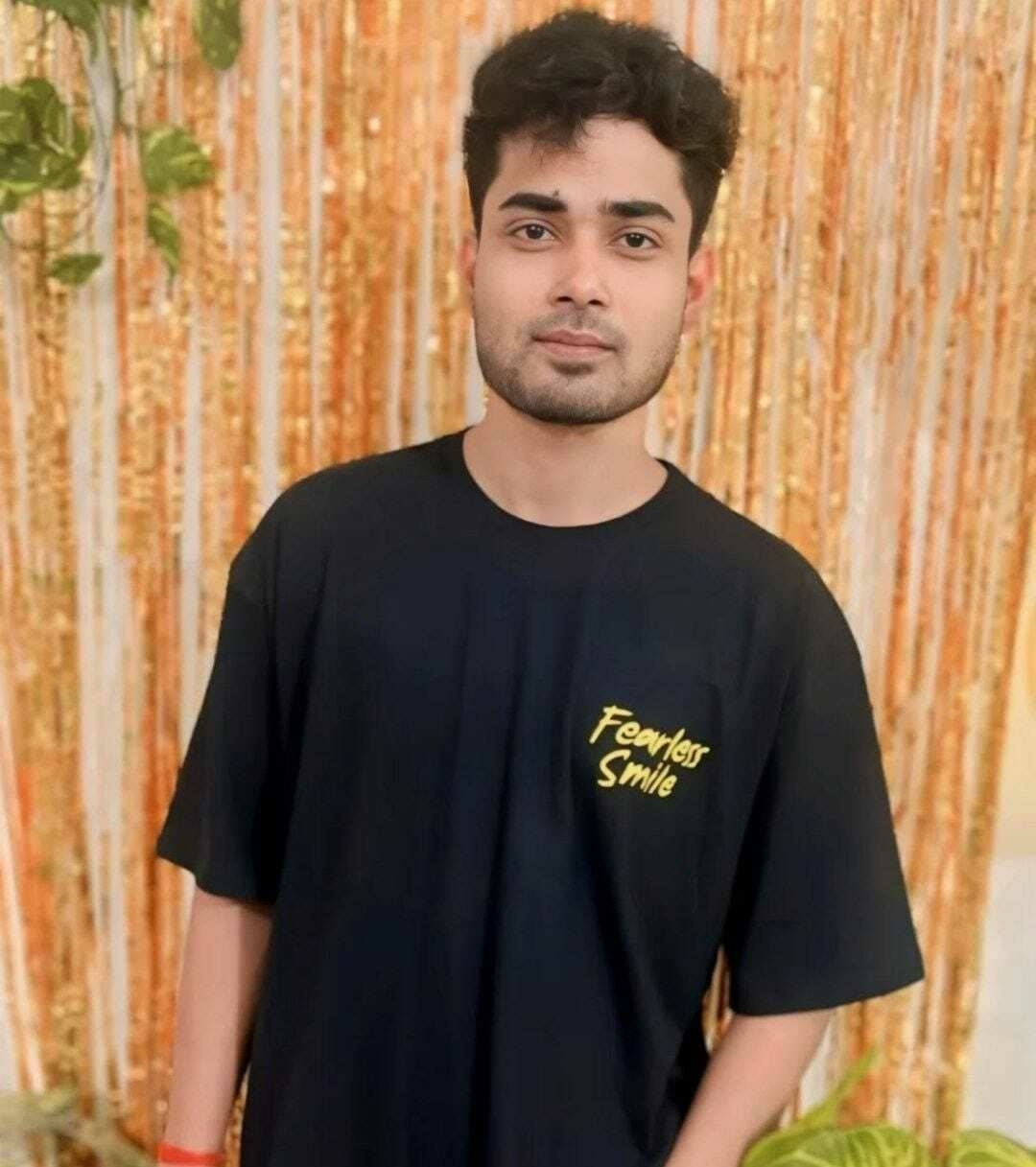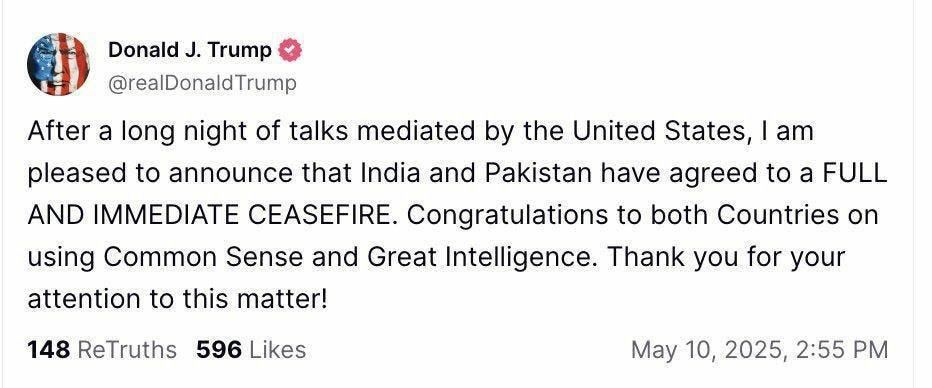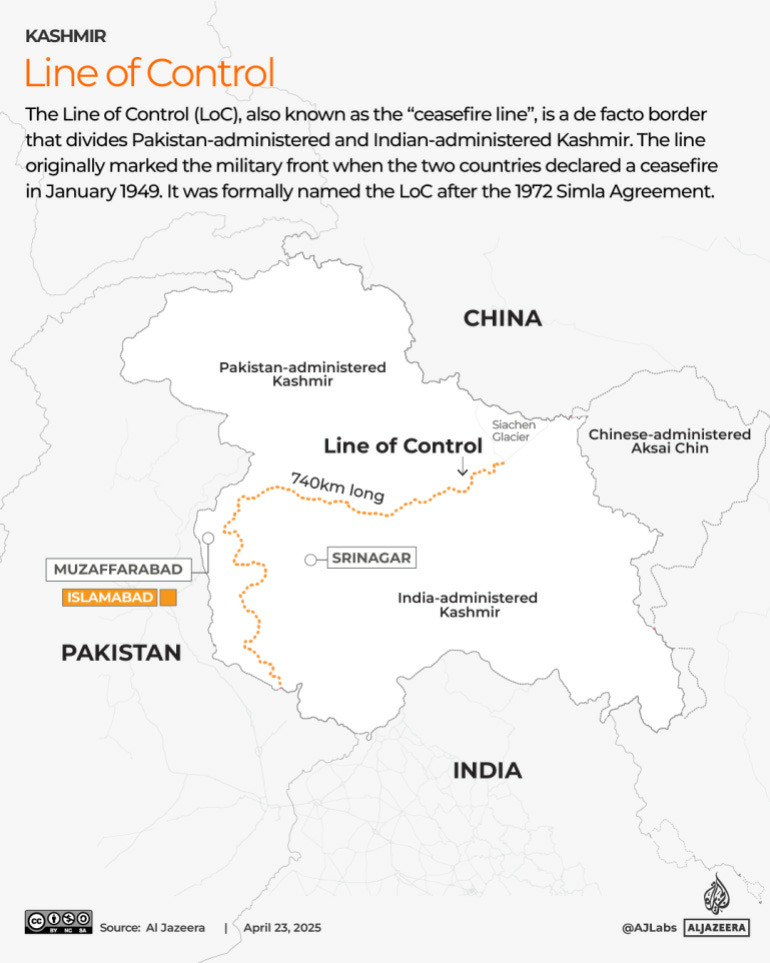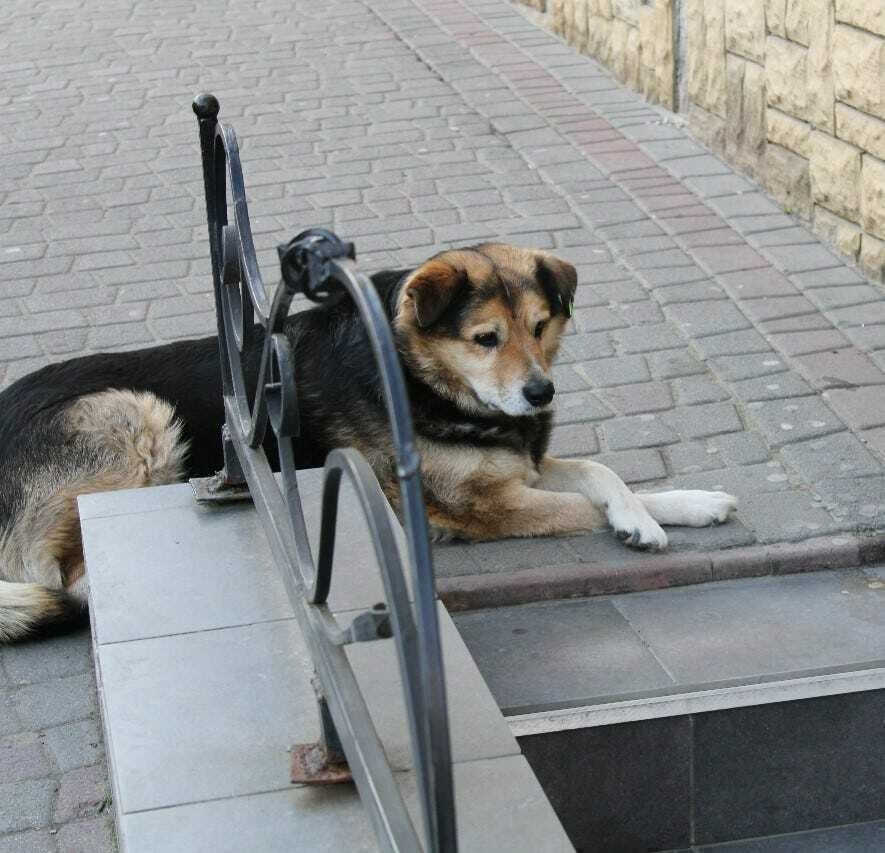Editor’s Note:
Our team responds to the news as quickly as possible – including today’s attacks between Pakistan/India and ceasefire – by immersing ourselves in the experiences of those living through those events.
If you are eager to hear them, upgrade to a paid subscription and support our work.
After spending about 3-4 months under constant Russian attacks, Jattashankar got used to it.
“I was mentally prepared when they [Russians] launched drones and ballistic missiles… You will see the drones here and there,” he said.
Jattashankar Sinha, born and raised in Ayodhya, India, lived in Ukraine for a year during the full-scale Russian invasion.
But as the war raged on, he decided to go back to his home country. Fleeing one war, Jattashankar stumbled upon escalation in his native land: new attacks between two long-standing nuclear-armed adversaries: India and Pakistan.
Today, Pakistan launched yet another attack on India. Now, news is breaking over the last few hours about how the two countries agreed to an immediate, but tenuous, ceasefire.
The recent escalation of the conflict between India and Pakistan was not merely a localized dispute. It represents a global threat as both nations possess nuclear capabilities and are standing on the brink of a full-scale war.
The conflict poses a risk to the arms supply chains to Ukraine. Although both countries officially maintain neutrality, their weapons indirectly end up on the battlefield in Ukraine. At a time when every source of military support is vital, Kyiv risks losing access to additional arms needed for its defense.
As the whole world was anxiously monitoring the escalation between two nuke-armed long-time rivals, the unpredictable and lightning-fast ceasefire calls into question the full resolution of the conflict and still does not provide clarity on the onset of stability in the South Asian region.
The Indian expat community in Ukraine remains significant despite the government’s ambiguous stance on Russia’s invasion. There are about 18,000 Indian students enrolled in universities in Kyiv, primarily pursuing degrees in medicine and engineering.
“Living and studying medicine in a war-torn Ukraine taught me resilience in the face of fear, unpredictability, and loss. I learned how to keep calm under pressure, to adapt quickly, and to stay focused on saving lives even when sirens were blaring outside. That experience prepared me mentally for what’s happening now in my own country, ” Jattashankar said.
Dr. Jattashankar Sinha is from Ayodhya, India. He came to Ukraine in 2017 to pursue a medical degree at the National Bohomolets University in Kyiv, as he hadn’t qualified for the entry exam in India. Several students from India consider Ukraine an option for education, as universities are cheaper here.
In Ukraine, medical education costs from $700 to $1,800 per year. In India, prices average $1,600 up to as much as $20,500 per year.
“Ukraine is in my list of favorite countries. It is so beautiful. Especially the West[ern] part of Ukraine,” Jattashankar said.
After the start of the full-scale invasion, Jatashankar went home to India, before returning in 2023 to spend another year in Ukraine.
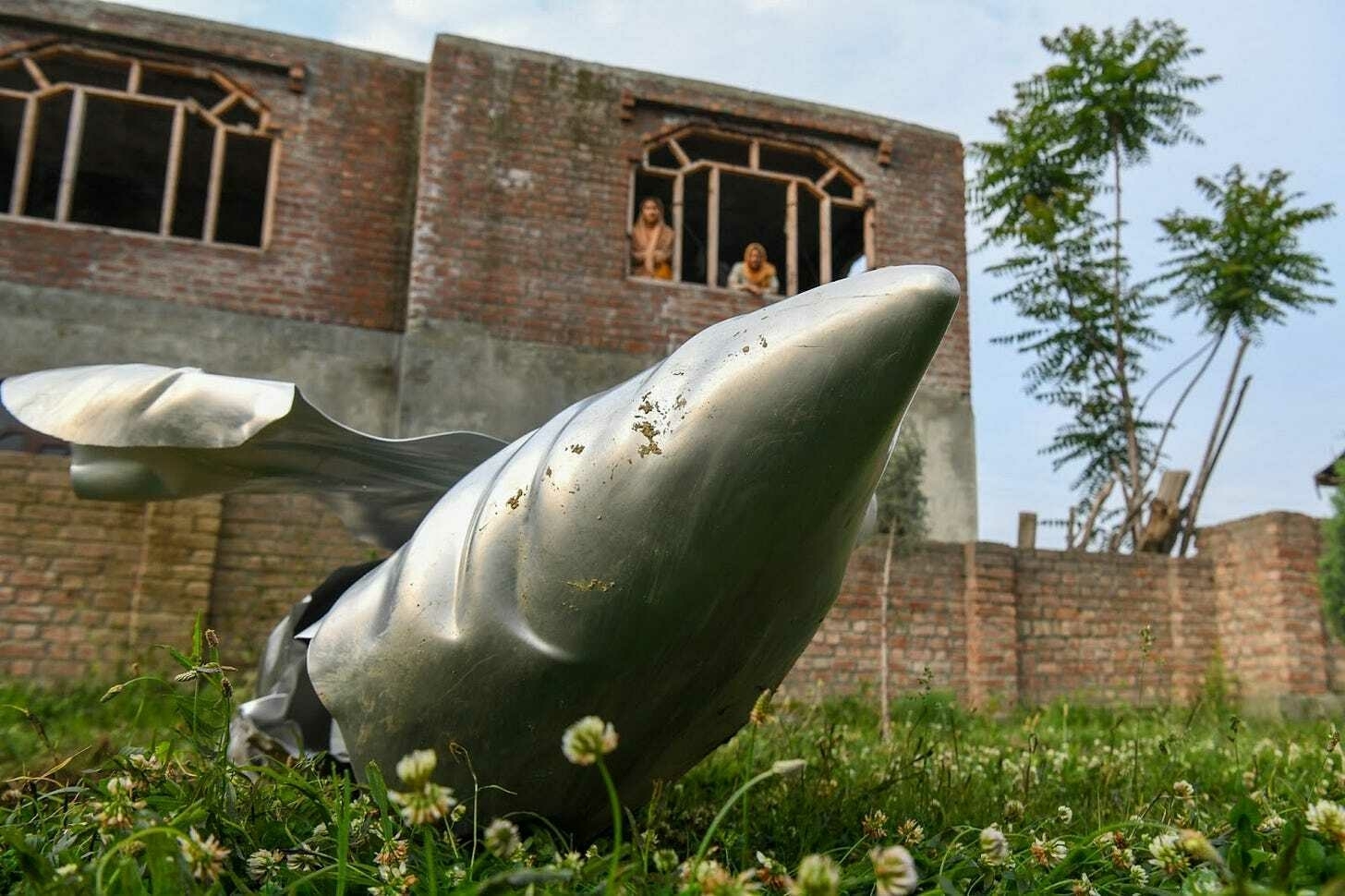
Over the last couple of weeks, he was living with another conflict being at his doorstep. Last month, a group of militants opened fire on tourists in the Kashmir town of Pahalgam, killing at least 26 people. In response, India attacked Pakistan on May 7, launching the so-called Operation Sindoor. Pakistan called the aggression an “act of war” and retaliated.
Today, Pakistan struck Indian military targets as part of its “Operation Bunyan Marsus” against India, which India called a “blatant escalation”. India's Foreign Secretary Vikram Misri announced Pakistani attacks on civilians and infrastructure and denied Pakistan's claims that India's critical infrastructure had been hit.
“After the brutal Pahalgam attack, where so many innocent people, mostly tourists, lost their lives, emotions were already running high.... But seeing things escalate further missile strikes, civilian areas being threatened brings a sense of fear and frustration… No one wants more lives lost on either side of the border. We have seen enough pain already,” Jattashankar shared today with The Counteroffensive.
President Trump claimed that the U.S. mediated the ceasefire, but sources on both sides quickly poured cold water on that notion.
Officials from both India and Pakistan confirmed the ceasefire had been reached, but said that diplomats from three dozen countries were involved in the agreement. An Indian source noted that the ceasefire deal was negotiated directly between India and Pakistan, despite Trump’s announcement that the U.S. had mediated the talks.
India’s Foreign Secretary Vikram Misri stated that military actions on the ground and firing between countries will stop at 5 pm local time. The two nations will speak again on May 12. The deescalation is already moving forward, and Pakistan announced it would reopen its airspace to all commercial and military flights.
Indian defense officials held a news conference in New Delhi to confirm the agreement but added they would remain alert to defend their country if necessary.
Pakistan and India have been in conflict for 78 years over Kashmir, a region that lies between the two nations. The dispute began in 1947, after the partition of British India, which led to the creation of two independent states: a predominantly Hindu India and a predominantly Muslim Pakistan.
At the time, the ruler of Kashmir hesitated to join either country as the state had both Hindu and Muslim populations. The indecision ignited a territorial conflict that has been growing ever since.
Both countries officially claim the entire territory of Kashmir. A portion of it is also under Chinese control, although China has not claimed additional territory. China occupied the area in 1962 and has maintained control ever since. Prior to that, it was controlled by India, which continues to seek the territory back.
Jattashankar and his family live far from the conflict's epicenter and have remained calm. He said that he has “trust” in his army.
Ukraine has followed India’s footsteps and decided to remain neutral in the conflict between India and Pakistan, urging a “diplomatic solution to all contentious issues.”
“As an Indian, I view our country's approach to the Russia-Ukraine war as rooted in strategic autonomy. India has long followed a policy of non-alignment, and in today's multipolar world, that has evolved into maintaining strong relations with multiple powers without being drawn into blocs,” said Jattashankar.
Both Pakistan and India unofficially supply ammunition to the Ukrainian army.
Indian artillery ammunition may have reached Ukraine’s frontlines through European suppliers, such as Italy and the Czech Republic. These countries are leading the initiative to supply artillery shells to Kyiv from countries outside the European Union.
India officially denies the presence of its weapons in Ukraine. However, Russia, a close ally of India, has demanded that Delhi stop supplying weapons to Ukraine.
India probably faces the ongoing war in Ukraine and the rearmament of Europe as an opportunity to develop its defense sector.
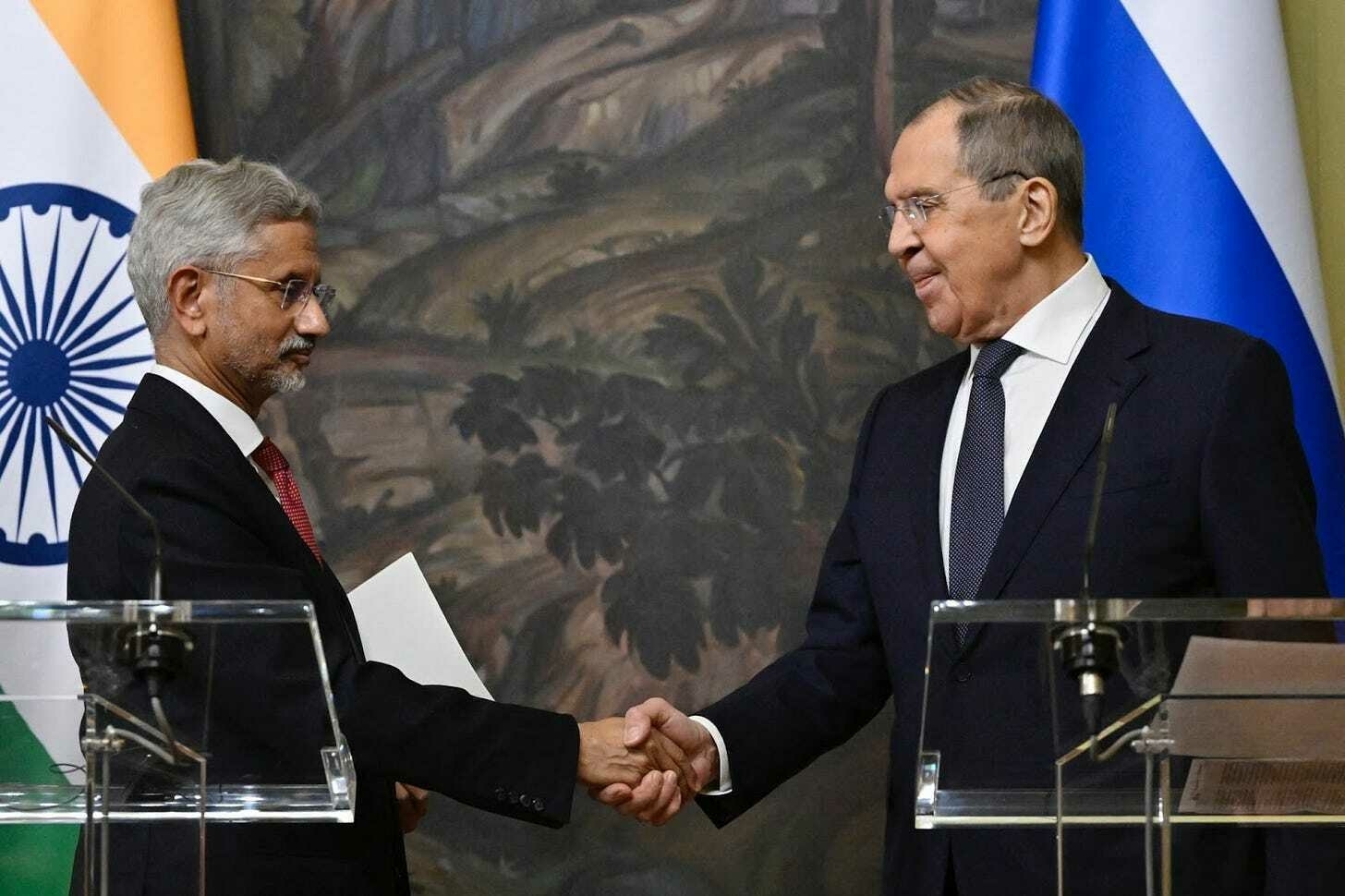
Meanwhile, India is continuing to increase its cooperation with Russia. In 2024, it became Russia’s second-largest oil importer. The Russian military-industrial complex and the state’s budget depend on revenues from energy sales, as they account for 30 percent of government revenues.
This year, Russia and India signed their largest-ever oil supply agreement. Under this agreement, Moscow will supply Delhi nearly 500,000 barrels of crude oil daily for 10 years. Moreover, India remains the largest recipient of Russian arms exports, including the S-400 missile defense system.
“Prime Minister Modi's neutral stance, including his calls for diplomacy and dialogue, reflects India’s emphasis on peace and pragmatic engagement, especially given our deep economic and defense ties with both Russia and the West,” Jattashankar told The Counteroffensive. “Neutrality allows India to be a potential mediator and maintain its own interests without being entangled in distant wars. Our priorities lie in development, regional stability, and preserving strategic independence.”
The situation from the Pakistan side is even more prominent. After having reportedly supplied Ukraine and Israel with ammunition for the past years, it is now struggling with a shortage of artillery as conflict with India looms as a possibility.
In August 2022, journalists spotted a British Air Force plane making 12 trips between a military base in Pakistan and an international airport in Romania. It was allegedly transporting artillery shells of Pakistani origin to Ukraine.
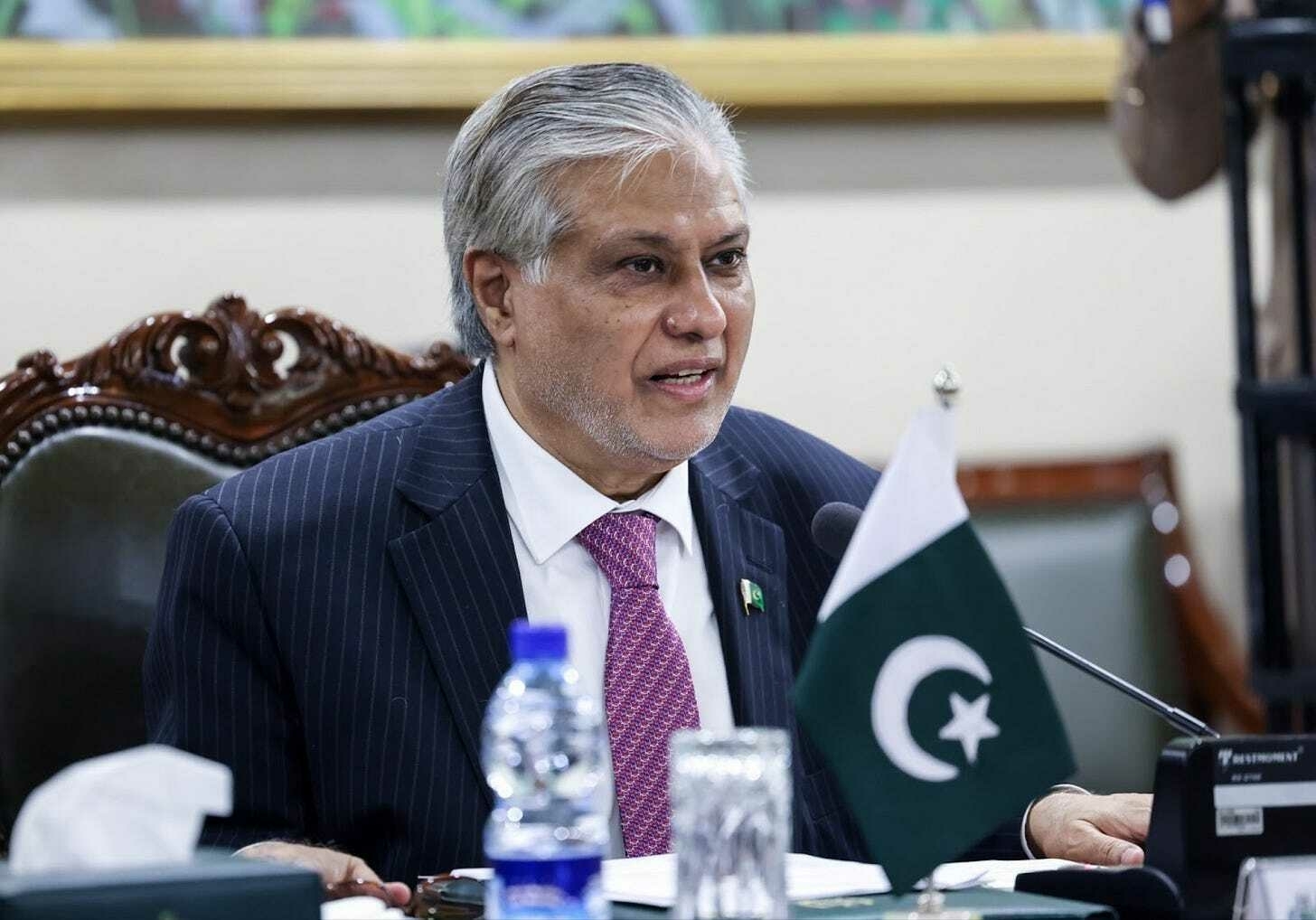
The Counteroffensive asked the State Customs Service of Ukraine about the import of weapons of Indian and Pakistani origin. We have not received a response.
While Ukraine is worried about the cessation of critical ammunition, an even bigger problem is brewing in the world: the possibility of a full-scale war between two nuclear countries rose over the last weeks and the ground of ceasefire agreement is still not clear.
“Personally, I didn't get flashbacks [of Russia’s war in Ukraine] from our own regional tensions when the war escalated, but it did highlight how quickly conflicts can escalate and the importance of diplomacy, especially in nuclear-armed regions like ours,” Jattashankar noted.
Even though Jattashankar's family is far from the conflict, his friend and mentor at a university in India is witnessing a different reality.
Dr. Paras Singh Jamwal was born and raised in Jammu, Kashmir. Paras’ parents are safe after the recent air combat in their native region, but Paras remembers the phone conversation with them that night: the explosions were thunderous.
“Last night I was talking to my parents. Whole night sirens were blowing, and also the whole night there were all bombarding happening, so there was a lot of noise around my home”, Paras said after the recent battle between India and Pakistan.
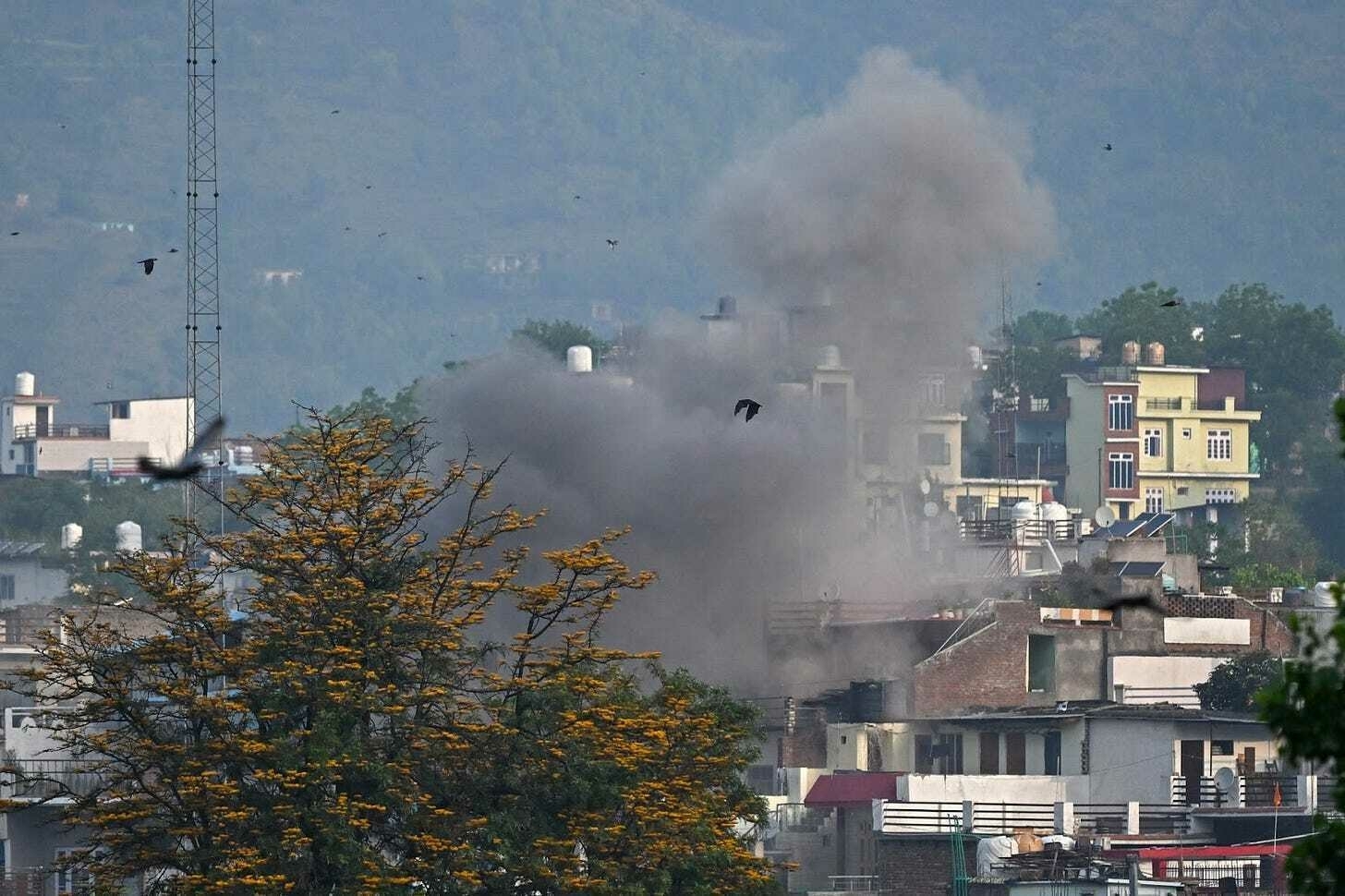
Kashmir and its citizens have long been prepared for a war scenario, and Paras said he witnessed several confrontations as a child.
“Growing up in a place where life was always under threat from terrorism was never easy. The constant fear became a part of everyday life…Those memories stay and they are not good for mental health,” said Paras.
As we talked to Jattashankar about today’s attacks, he said that Paras’ family who lives in Jammu is safe and okay.
It is not the first time in recent years that a full-scale war has loomed between the two nations. In 2019, a car packed with explosives rammed into a bus carrying Indian police officers, killing 40. In response, India launched an airstrike on a suspected militant camp in Pakistan, triggering a new wave of clashes.
“As for nuclear rhetoric, yes, I believe any normalization of nuclear threats, however subtle, is extremely dangerous. If powerful nations begin to use nuclear blackmail more openly, it sets a troubling precedent. It could embolden others to consider such tactics, which would erode global norms and increase the risk of catastrophic miscalculations,” said Jattashankar.
India has about 180 nuclear warheads in its stockpile, while it is estimated that Pakistan has approximately the same number. Neither of the countries have officially disclosed the number of nuclear weapons they possess.
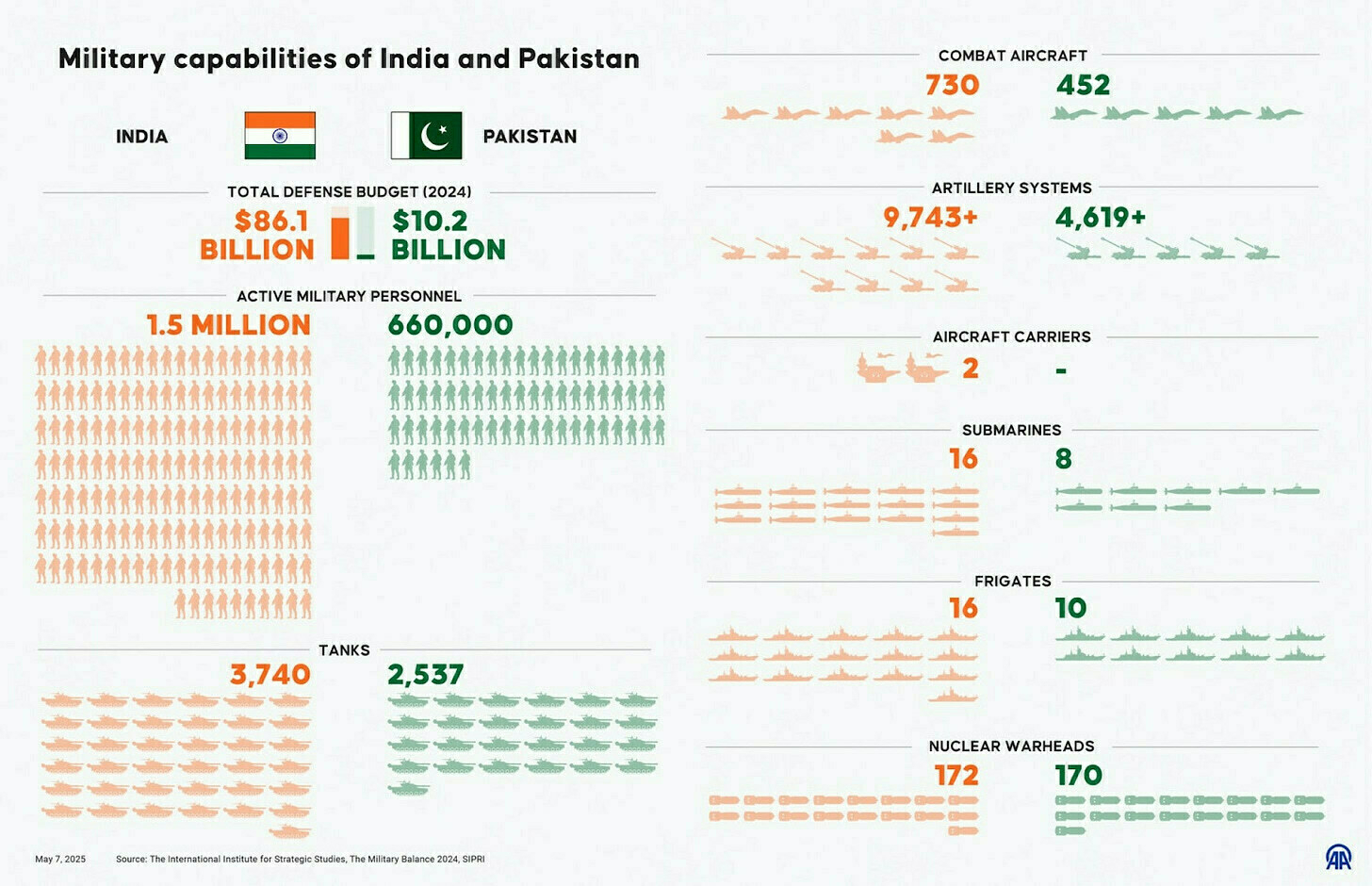
“My hopes for the future are that everything will settle down, because war is never a good thing…because in the end, people have to suffer,” said Paras, who plans to return to his native Jammu after completing his studies. “Let’s hope for humanity and let’s be human. Always.”
The world has entered a new stage of uncertainty, where large-scale war is no longer off the table. Since Russia’s illegal annexation of Crimea more than a decade ago, the costs of conflict seem to have been diminished.
And in a world where war is not deterred, one miscalculation can turn into a global conflagration.
In this time of great uncertainty — and unstable American support — it means that the situation on the ground is very dangerous. Your contributions help us get the body armor, medical gear, and supplies we need to stay safe.
Show your support by contributing to our tip jar - funds go towards keeping us safe and ensuring our work continues.
NEWS OF THE DAY:
INDIA AND PAKISTAN AGREE ON TRUCE: India and Pakistan have confirmed a ceasefire agreement following weeks of escalating clashes, missile exchanges, and drone strikes along their shared border over the long-disputed Kashmir region.
President Trump claimed that the U.S. was behind the ceasefire on his Truth Social platform Saturday. Although some diplomatic figures have mentioned that role played by the State Department, reporting is emerging that dozens of countries were involved — and that the deal ultimately came as a result of direct negotiations between the parties.
ALLIES PLAN SANCTIONS AGAINST RUSSIA: The U.S., the EU, and the U.K. are threatening additional sanctions against Russia if it refuses to accept a U.S.-led proposal for a 30-day ceasefire with Ukraine.
The warnings come as European leaders visit President Zelenskyy in Kyiv to demonstrate solidarity with Ukraine, after the leaders of China and Brazil traveled to Russia this week to attend Moscow’s Victory Day parade.
Ukraine has agreed to the proposed 30-day ceasefire, but President Putin has so far declined to support it. Kremlin press secretary Dmitry Peskov said Western delivery of arms to Ukraine should stop before agreeing to a ceasefire.
EU, UKRAINE ENDORSE WAR CRIMES TRIBUNAL: Ukraine and 35 European countries have endorsed the establishment of a special tribunal to prosecute Russia for its "crimes of aggression" against Ukraine.
“This means no one will escape accountability for the crimes committed—not even the [Russian] leaders who made the decision to send troops here to commit war crimes and atrocities we have witnessed,” said Kaja Kallas, the EU’s High Representative for Foreign Affairs.
The newly proposed tribunal would have the authority to pursue Russia over its decision to invade Ukraine, though it could only arrest Putin once he leaves office, due to the immunity granted to sitting presidents, prime ministers, and foreign ministers.
DOG OF WAR:
Today’s Dog of War is this doggie Nastia met in Ukraine’s western city of Chernivtsi, who was relaxing in a distinguished pose by the side of the street.
Stay safe out there.
Best,
Clara

